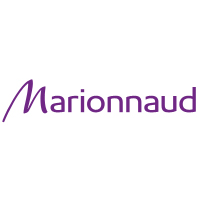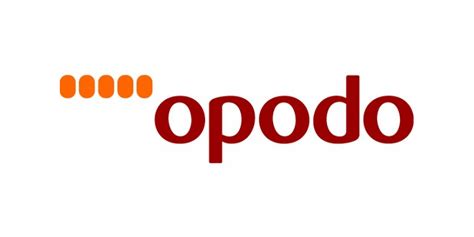Definition, Explanation and Examples
Now that you are familiar with some basic concepts of the accounting equation and balance sheet let’s explore some practice examples you can try for yourself. If the net amount is a negative amount, it is referred to as a net loss. Owner’s or stockholders’ equity also reports the amounts invested into the company by the owners plus the cumulative net income of the company that has not been withdrawn or distributed to the owners. The assets of the business will increase by $12,000 as a result of acquiring the van (asset) but will also decrease by an equal amount due to the payment of cash (asset). In other words, the total amount of all assets will always equal the sum of liabilities and shareholders’ equity.
This is consistent with financial reporting where current assets and liabilities are always reported before long-term assets and liabilities. The accounting equation equates a company’s assets to its liabilities and equity. This shows all company assets are acquired by either debt or equity financing.
This business transaction decreases assets by the $100,000 of cash disbursed, increases assets by the new $500,000 building, and increases liabilities by the new $400,000 mortgage. The concept of expanded accounting equation is that it shows further detail on where the owner’s equity comes from. In this case, the owner’s equity will be replaced with the elements that make it up. In this case, the total assets and owner’s equity increased $5,000 while total liabilities are still the same. Under all circumstances, each transaction must have a dual effect on the accounting transaction.
- The claims to the assets owned by a business entity are primarily divided into two types – the claims of creditors and the claims of owner of the business.
- Its applications in accountancy and economics are thus diverse.
- The capital would ultimately belong to you as the business owner.
- That is, each entry made on the debit side has a corresponding entry (or coverage) on the credit side.
Equity represents the portion of company assets that shareholders or partners own. In other words, the shareholders or partners own the remainder of assets once all of the liabilities are paid off. In this case, there is no transaction that can make the equation not balanced.
Example Transaction #5: Purchase of Advertising on Credit
It can be defined as the total number of dollars that a company would have left if it liquidated all of its assets and paid off all of its liabilities. In Double-Entry Accounting, there are at least two sides to every financial transaction. Every accounting entry has an opposite corresponding entry in a different account. This principle ensures that the Accounting Equation stays balanced.
Its applications in accountancy and economics are thus diverse. The business has paid $250 cash (asset) to repay some of the loan (liability) resulting in both the cash and loan liability reducing by $250. $10,000 of cash (asset) will be received from the bank but the business must also record an equal amount representing the fact that the loan (liability) will eventually need to be repaid. The cash (asset) of the business will increase by $5,000 as will the amount representing the investment from Anushka as the owner of the business (capital). In the case of a limited liability company, capital would be referred to as ‘Equity’. When a company purchases goods or services from other companies on credit, a payable is recorded to show that the company promises to pay the other companies for their assets.
What Are the 3 Elements of the Accounting Equation?
Shareholders’ equity is the total value of the company expressed in dollars. Put another way, it is the amount that would remain if the company liquidated all of its assets and paid off all of its debts. The remainder is the shareholders’ equity, which would be returned to them. The double-entry practice ensures that the accounting equation always remains balanced, meaning that the left-side value of the equation will always match the right-side value. The accounting equation is a concise expression of the complex, expanded, and multi-item display of a balance sheet. The accounting equation is fundamental to the double-entry bookkeeping practice.
The difference between the $400 income and $250 cost of sales represents a profit of $150. The inventory (asset) will decrease by $250 and a cost of sale (expense) will be recorded. (Note that, as above, the adjustment to the inventory does prepaid rent affect net income and cost of sales figures may be made at the year-end through an adjustment to the closing stock but has been illustrated below for completeness). All in all, no matter the case, total assets will always equal total liabilities plus owner’s equity.
Equity Component of the Accounting Equation
The inventory (asset) of the business will increase by the $2,500 cost of the inventory and a trade payable (liability) will be recorded to represent the amount now owed to the supplier. Owners can increase their ownership share by contributing money to the company or decrease equity by withdrawing company funds. Likewise, revenues increase equity while expenses decrease equity. A liability, in its simplest terms, is an amount of money owed to another person or organization. Said a different way, liabilities are creditors’ claims on company assets because this is the amount of assets creditors would own if the company liquidated. Owner’s equity is the remaining of what the company has after deducting all liabilities from its total assets.
Some assets are tangible like cash while others are theoretical or intangible like goodwill or copyrights. Think of retained earnings as savings, since it represents the total profits that have been saved and put aside (or “retained”) for future use. The major and often largest value assets of most companies are that company’s machinery, buildings, and property. These are fixed assets that are usually held for many years. Assets include cash and cash equivalents or liquid assets, which may include Treasury bills and certificates of deposit (CDs). You can think of them as resources that a business controls due to past transactions or events.
We can expand the equity component of the formula to include common stock and retained earnings. While we mainly discuss only the BS in this article, the IS shows a company’s revenue and expenses and includes net income as the final line. These are some simple examples, but even the most complicated transactions can be recorded in a similar way. This equation is behind debits, credits, and journal entries.
Basic Accounting Equation Formula
That is, each entry made on the debit side has a corresponding entry (or coverage) on the credit side. Since the balance sheet is founded on the principles of the accounting equation, this equation can also be said to be responsible for estimating the net worth of an entire company. The fundamental components of the accounting equation include the calculation of both company holdings and company debts; thus, it allows owners to gauge the total value of a firm’s assets. Its concept is also to express the relationship of the balance sheet items which are assets, liabilities, and owner’s equity. As we have seen in the example above, the $50,000 of cash which the owner injects into business becomes the assets of $50,00.
Due to this, the owner’s equity is also known as net assets or net worth. Assets represent the valuable resources controlled by a company, while liabilities represent its obligations. Both liabilities and shareholders’ equity represent how the assets of a company are financed. If it’s financed through debt, it’ll show as a liability, but if it’s financed through issuing equity shares to investors, it’ll show in shareholders’ equity. It’s important to note that although dividends reduce retained earnings, they are not expenses. Therefore, gaap services dividends are excluded when determining net income (revenue – expenses), just like stockholder investments (common and preferred).
The purpose of this article is to consider the fundamentals of the accounting equation and to demonstrate how it works when applied to various transactions. The accounting equation is based on the premise that the sum of a company’s assets is equal to its total liabilities and shareholders’ equity. As a core concept in modern accounting, this provides the basis for keeping a company’s books balanced across a given accounting cycle. All assets owned by a business are acquired with the funds supplied either by creditors or by owner(s). In other words, we can say that the value of assets in a business is always equal to the sum of the value of liabilities and owner’s equity. The total dollar amounts of two sides of accounting equation are always equal because they represent two different views of the same thing.





















































































































































































































